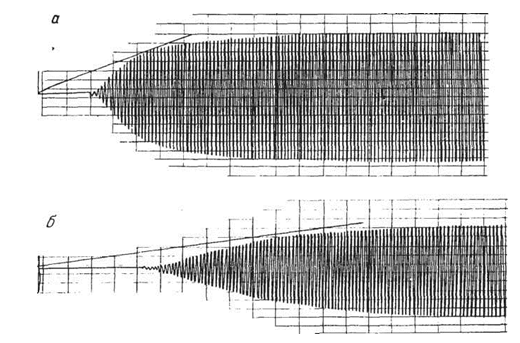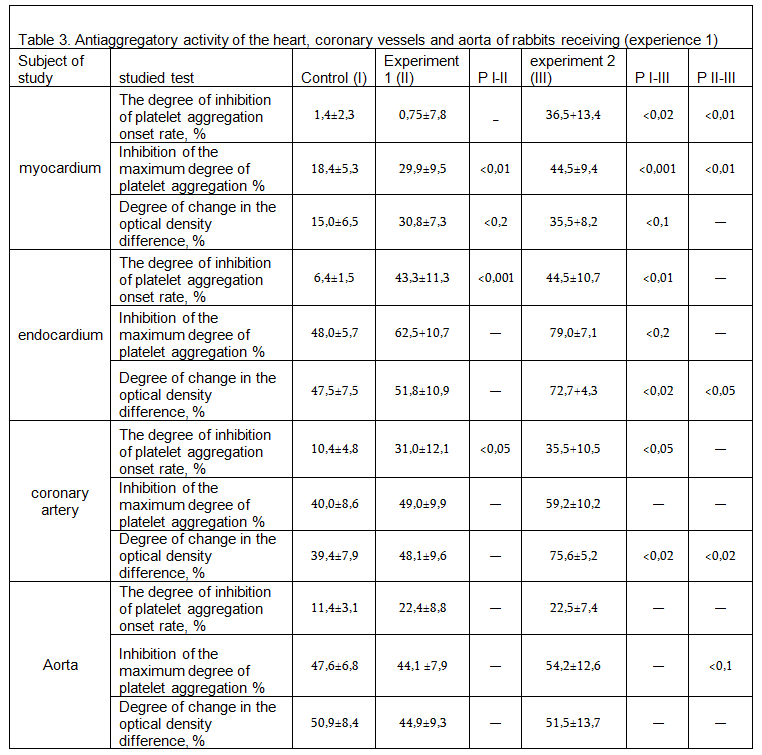Previously it was shown that experimental peroxidation caused by an antioxidant-free diet develops hypercoagulation and inhibits fibrinolysis. This is one of the causes of morphological changes in the vascular wall resembling atherosclerosis in animals. However recently it is established that the complex isolated from the vascular wall peptides, tentatively called, slows down blood clotting.
In this regard, it was interesting to trace the effect of multiple injections on the state of the hemostatic system in animals with experimentally induced peroxidation syndrome.
Methods of research
Shot peptide is a set of basic peptides with a molecular low weight, isolated from the vessels of the calves. These peptides are cytomedines, regulating the functional activity of tissues, which are the source of cytomedines production.
The experiments were carried out on 30 rabbits weighing 2.5—3.7 kg. The animals were divided into 3 groups: I — intact (control) — has been feed up on the usual diet of vivarium, II — which has received for 100 days a semi-natural non-antioxidant diet (experiment 1), III — which has received a non-antioxidant diet, and from the 30th day of the experiment peptide at a dose of 1 mg for injection intramuscularly 1 time per every 2 days (experiment 2). After completion of the experiment, the carotid artery was cannulated in rabbits under light hexenal anesthesia, from which blood was taken for research. Later, the animals were killed with the introduction of hexenal and tissues (aorta, coronary vessels, endocardium, myocardium) were taken to study their antiaggregational activity.
The peroxide resistance of erythrocytes and the level of malondialdehyde in the liver and erythrocytes evaluated syndrome of peroxidation. In addition, plasma levels of total lipids and cholesterol were determined.
In these animals tromboelastogramma, determined the clotting time of blood, recalcification plasma, thrombin time, fibrinogen concentration and fibrinogen In the content of antithrombin III, the natural lysis and retraction of a clot, aggregation of platelets and antiaggregatory activity of the vessels n tissue have been recorded. All the methods we use to study the hemostatic system are included in modern guidelines.
Results and discussion
Our observations has showed that animals had obvious signs of peroxidation syndrome by the end of the study period: peroxide resistance of erythrocytes decreased, the level of malondialdehyde in the liver and erythrocytes increased (table 1).

Shot peptide did not cause any significant changes in these parameters. With peroxidation syndrome (experiment 1), rabbits developed hypercoagulation and inhibited fibrinolysis, the content of natural anticoagulants fell, including antithrombin III, the concentration of fibrinogen increased, fibrinogen B appeared, the retraction of the blood clot increased. Peptide the applied dose, not only eliminated the phenomenon of hypercoagulability, but also reduced the level of fibrinogen, the disappearance of fibrinogen and stimulation compared to the experience I fibrinolysis (table. 2).

In rabbits, receiving the peptide, there was a tendency to elongation of the parameters R and K and the decrease of the amplitude of thromboelastogram (see figure).
Tromboelastogramma of animals that are on a diet without antioxidant treated (a) and untreated (b).






